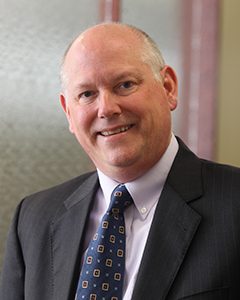Are More Modifications Needed Before We Feel SECURE?

When the Setting Every Community Up for Retirement Enhancement (SECURE) Act of 2019 was finally signed into law on December 20, 2019, it was a cause for celebration among retirement industry professionals everywhere. After all, the SECURE Act was the first major legislation for our industry since the Pension Protection Act of 2006—14 years ago—and it took some three years to wend its way through the machinations of Congress.
But as we wrote in the wake of the bill’s approval, there are still some significant questions surrounding SECURE, and about what could be coming next from the federal government to address the retirement savings crisis.
One of the major SECURE provisions is the creation of the Pooled Employer Plan (PEP), which allows unrelated employers to collectively participate in a retirement plan which is professionally run. As with the Multiple Employer Plan (MEP), the economies of scale allow the participating employers to charge lower fees than traditional plans.
Both models are designed to benefit small businesses who otherwise might struggle to afford a traditional plan. What is different is that, with an “open” MEP, participating employers are required to file separate 5500s (the form that provides federal agencies with information about the plan, its finances, and its operational requirements). Adopting employers also were required to have separate, independent audits by a CPA if the employer’s portion of the plan had 100 or more participants.
A PEP is permitted to file a combined Form 5500 and to conduct one combined audit; they are also eligible for additional streamlined reporting rules.
On the other hand, the new PEP rules do not apply to 403(b) plans, thereby limiting some employers’ opportunities to take full advantage of the new plan type.
In addition, the Insured Retirement Institute (IRI) is asking Congress to clarify that a tax credit for small businesses that join either a PEP or a MEP would take effect immediately, rather than on January 1, 2021, as is currently scheduled.
That request brings up a number of questions, not the least of which is: How can you receive a tax credit for a plan before you have established the plan itself?
Nevertheless, we are pleased in general by the introduction of the PEP. The AARP has said that workers with access to a retirement plan through their employer are 15 times more likely to save for retirement, while the Pew Charitable Trusts reports that over 40% of full-time employees who work at small and midsized firms do not have an employer-sponsored plan.
Also worth noting is Sen. Sheldon Whitehouse (D-R.I.)’s introduction of a bill that would introduce the concept of helping employees contribute to a retirement plan through an automatic payroll deduction Individual Retirement Account (IRA), or Auto-IRA.
The Automatic IRA Act would require employers that do not provide another qualified retirement plan and that have more than 10 employees to enroll workers automatically in an Auto-IRA, unless the employee opts out. Employers would receive tax credits to defray the costs of setting up those accounts.
“We know that automatic savings programs are an effective strategy for building a nest egg, yet tens of millions of Americans don’t have that option through their job,” Whitehouse said. “This bill would make it easier for employees to save for retirement in a simple fashion without overburdening employers.”
Besides the not-insignificant concerns about what would effectively be a federal mandate if the Automatic IRA Act were to pass, there are also the individual states to consider. Oregon, Illinois and California are among the states to introduce programs that require most employers to set up a qualified private retirement plan or to offer a state-run retirement plan.
But do they work? The OregonSaves program had more than 50,000 employee participants at the end of 2018, according to research firm Cerulli Associates, with assets rising from $4.6 million as of July 1, 2018 to $10.9 million as of December 31, 2018.
But, Cerulli added, the average balance was less than $500, well below the national average 401(k) account balance of $85,000.
The IRI and the National Association of Insurance and Financial Advisers have objected to such approaches, arguing that they could put the state in competition with private retirement plans. We too are generally not big fans of state-run plans, as with most government initiatives there is a lot of red tape to be navigated. California’s CalSavers plan allows employers to establish an individual IRA already available to state residents, since contributions will be made from payroll which has be proven to increase retirement savings.
However, there also exists an imposed cost to the employer since they will have to maintain a new payroll process to regularly remit contributions to the state. In addition, the amount of annual contributions each employee can make to their retirement plan is exactly the same as an IRA. Good for California as an entity, perhaps not so good for participating employers and their employees.
There will obviously be many more tweaks and suggested improvements to SECURE, as well as further innovative ideas on how to tackle the retirement savings problem, in the future. We will be keeping a close eye on all of them.
And hope that it isn’t another 14 years before dramatic action is taken.
About the Author
